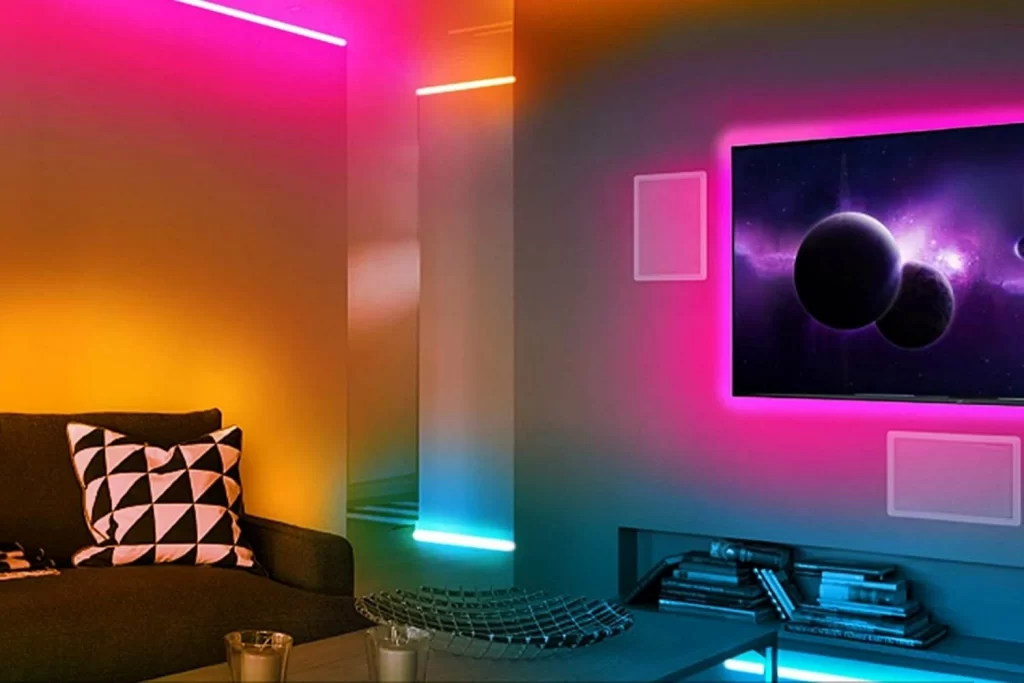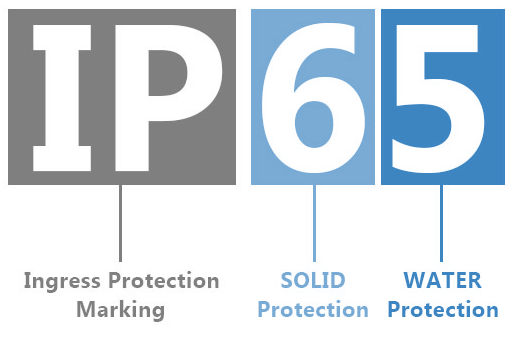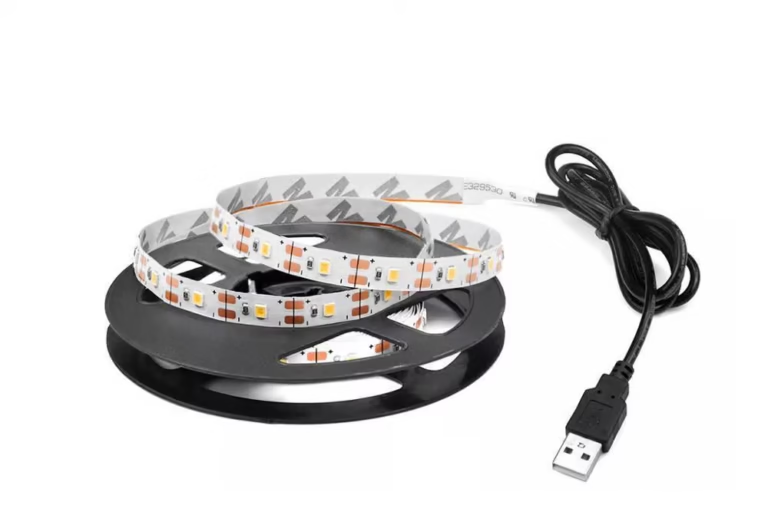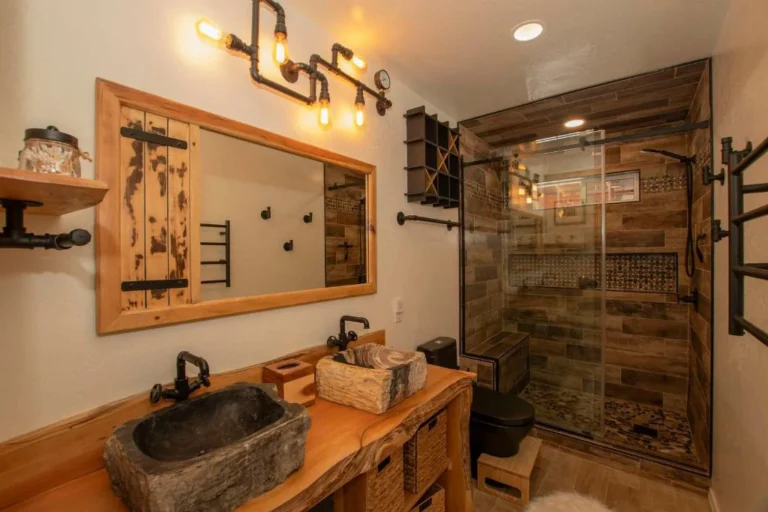LEDs are durable, energy-efficient light sources that will illuminate our world for a long time to come. While they may not excite the average passerby, the capabilities of these tiny light-emitting diodes and their new control methods are sure to leave many in awe. One of these capabilities is RGB lighting, which is increasingly being used in a variety of applications, from under-cabinet accent lighting to PC gaming setups.
As you will see in this article, the vast array of color options and features available on the market can be a bit overwhelming. However, with RGB LEDs, color mixing technology allows these three primary colors—red, green, and blue—to combine and produce millions of colors.
What is RGB Color Mixing?
Remember when you mixed blue and yellow paint in school to make green? This mixing method is called subtractive color mixing, where red, blue, and yellow are the primary colors that combine to create secondary colors. In subtractive mixing, the absence of color results in white. Subtractive mixing involves removing certain wavelengths from a broad range of light to produce new colors. This method is widely used in painting, dyeing, and printing.
This model is just one of two types of mixing found in the visible light spectrum. In lighting, we pay more attention to additive color mixing. Additive mixing creates new colors by adding one set of wavelengths to another. When all colors are combined, we see white instead of many individual colors. This is called additive mixing because all wavelengths reach our eyes.
In the additive color model, the absence of color results in black, while colors are produced by photons emitted from different metal alloys. Red and amber LEDs utilize the aluminum indium gallium phosphide (AlInGaP) material system, whereas blue, green, and cyan LEDs are based on the indium gallium nitride (InGaN) system. This forms the foundation of the RGB (red, green, blue) color model.
How does color mixing apply in LED Lighting?
RGB LEDs are modules that can produce virtually any color using three primary additive colors: red, green, and blue. The simplest RGB LED combines three separate diodes within a single package, protected by a transparent lens. This type of LED has four pins—one for each colored diode and one for a common anode (+) or cathode (-).
Using the additive mixing principle we discussed earlier, these primary color LEDs can generate an astonishing array of colors. The LEDs themselves are dimmable, allowing each red, green, and blue diode to produce all the various shades of that color.
Technically, each colored LED can produce 256 different shades. To achieve every possible hue, a high-quality DMX controller is necessary. This is why lighting manufacturers often advertise “16.7 million different colors,” combining the three primary LEDs with 256 shades each (256 x 256 x 256).
So, how do RGB LEDs create various color combinations? It’s quite simple: by adjusting the brightness of each LED. For instance, increasing the brightness of the red and blue LEDs while decreasing that of the green LED results in purple. Conversely, lowering the brightness of the blue LED while raising the brightness of the red and green LEDs produces yellow.
What are RGB LED Strips?
RGB LED strips operate on the same principle. They contain many RGB LEDs mounted on a flexible strip, typically featuring four wires: three for each color and one for a common positive or negative connection. The end of the strip usually has a standard four-pin connector (technically called a C4P connector) that can plug into an RGB LED controller.
RGB LED strips can also produce a very cool white light by setting all three LEDs to maximum power, though this white tends to have a noticeable blue tint, exceeding 6500K. While RGB LED strips can generate a wide range of colors, they do have limitations; for instance, they cannot produce brown or soft pink hues. The accuracy of the colors largely depends on the controller you use.
How Can You Control RGB LEDs and Strip Lights?
To achieve precise colors with RGB lighting, you’ll need an RGB LED controller, often referred to as a 3-channel controller, since it essentially manages 3 primary color “channels.” This allows for easy adjustments of the 3 LEDs to produce your desired light. Here are some common types of controllers we typically use:
1. Single-Zone RGB LED Controllers
These controllers are typically used for managing LED strips. They come with a simple receiver that connects between the power source and the RGB strip, along with a handheld remote for control from 20-30 meters away. These controllers can connect via radio frequency or infrared signals. While they easily manage all connected LEDs, the downside is that they cannot independently control different sections.
2. Multi-Zone Smart RGB Controllers
These SMART controllers connect to your smart devices through a phone app. If you prefer dual dimming options, you can opt for a model that includes a remote control. The multi-zone support feature allows each RGB remote (or smart device app) to connect to multiple receivers, enabling control over various areas or rooms in your home. You can effortlessly manage your office, living room, and bedroom with the same RGB controller. Additionally, these controllers give you more color control by allowing you to manually adjust the red, green, and blue LEDs within a range of 0-256 in the app.
3. DMX Controller for RGB LEDs
DMX controllers offer limitless options for controlling RGB lighting and providing access to 16.7 million colors. Previously, DMX controllers were too large and cumbersome for small RGB applications. However, advancements in technology have led to compact touch panels, wall controllers, and even smartphone apps.
DMX controllers are typically used in large-scale setups or anywhere specific, extensive color control is required. The choice of DMX controller depends on how many strips you plan to run and your budget. Some controllers capable of managing thousands of channels simultaneously.
Top 5 RGB LEDs & Strips
Now that you understand how RGB LEDs work, take some time to explore our top five recommendations for RGB lights. Here are five unique products that can change colors at will, truly enhancing the atmosphere of your space.
12V RGB Flex Strips
The most popular RGB strip light we selling is the 12V flexible strip. These strips contain 30-60 LEDs per meter and range from 3 to 16.4 feet in length. Available in both IP65 waterproof and IP20 non-waterproof versions, they are suitable for indoor and outdoor use. Each strip comes with a 4-pin C4P connector, making it compatible with our easy-to-use remote RGB dimmers or smart RGB controllers.
Side-Emitting RGB Flex Strips
These unique LED strip lights are similar to the 12V RGB flexible strips. The only key distinction: they feature ultra-compact RGB LEDs that emit light sideways. This makes them an excellent option for areas requiring direct upward illumination, such as wall washing or backlighting applications. While the smaller diodes are more expensive than standard 12V strips, the convenience of side lighting provides an easy compromise for specific needs.
Plug-in RGB LED Strip Lights with Controller
The latest RGB color-changing strips have surpassed the previous maximum length of 32.8 feet, now reaching an impressive 150 feet! Each strip is equipped with a power cord featuring an RGB controller. The RGB strip light kit includes the power cord and an infrared remote control, allowing you to choose your desired length. These versatile strips are suitable for both indoor and outdoor use, perfect for brightening up rooms and corners. Made with a heavy-duty transparent PVC casing and UV inhibitors, the strips can be cut every meter, enabling users to customize the length after purchase.
Cree XP-E2 RGB
This is a 20mm printed circuit board featuring three individually addressable Cree XP-E2 LEDs in red, green, and blue. These LEDs can be controlled separately, allowing your LED driver and DMX controller to connect to each LED for optimal color mixing. Unlike other LED strips in this listing that operate on a constant DC voltage of 12-24 volts, these LEDs require a constant current source for safe operation.
RGB+W LED Strip Lights
Want to add another layer of complexity? By combining the millions of colors and shades we discussed earlier with an additional LED, we get RGBW. While RGB LEDs use three colored diodes, RGBW incorporates four—adding a white diode. Sometimes, these are integrated into the same diode, like the Cree XML-2 RGBW LED, but our 24V RGB+W strips alternate between RGB and warm white diodes.
RGB+W LEDs cannot be used with standard RGB (3-channel) dimmers; they require a 4-channel RGB+W controller for optimal performance.




